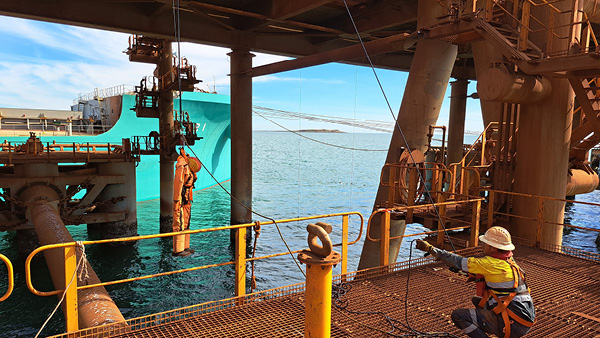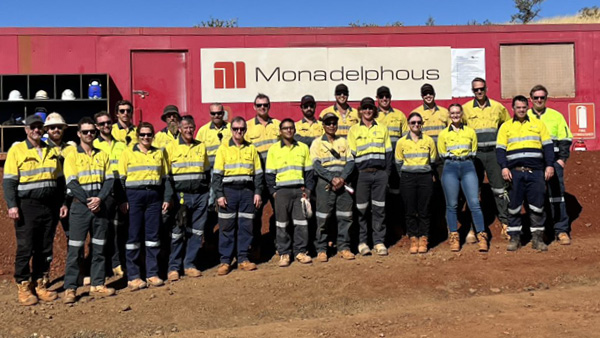In June this year our East Pilbara Projects Team was awarded three packages of work by Roy Hill on their Remote Managed Aquifer Recharged North (RMARN) Project.
The scope of works includes numerous technical challenges, including installation of almost 19 kilometres of one metre diameter HDPE pipework. The RMARN Project also presents geographical challenges as it is based over 35 kilometres, with between seven and ten work areas open at any given time.
Area Manager Aidan O’Reilly said that a fantastic team effort has gone into navigating these challenges and keeping the project on track.
“The whole team deserves credit for staying on schedule and successfully ensuring a great start to a long-term partnership with the customer,” he said.
“It has required a multi-disciplined, ‘all hands on deck’ approach, encompassing civil excavation, piping , electrical, thrust-boring, as well as the creek crossing work.”
From the onset, the major project risk identified was the required excavation across the Fortescue River and installation of a pair of 120 metre long Circular Steel Pipes (CSPs).
Upon mobilising in July, the team soon realised that those risks were even greater when unusual winter rains filled the river to more than two metres deep in the area where the pipework needed to be installed. While the water did clear over time, the risk remained that rain anywhere upstream could lead to flooding and significant project delays.
The team got to work and put together a plan to address this risk, while also dealing with other project complexities. This included unique specifications for piping identified in the scope of works, meaning that the team had to use a specific piece of machinery to meet customer requirements. The works were also undertaken in an extremely sensitive environmental area with stringent heritage, flora and fauna conditions that needed to be met.
Works on the river crossing began in late October with an arborist engaged to undertake tree removal in the area and ensure that native bird populations were safely relocated. The team then worked swiftly to remove topsoil and excavate the trench up to eight metres deep, using an excavator with a rock breaking attachment.
Installation of the CSP’s was conducted using a franna/excavator and, once positioned, held down with bulk bags and concrete tie-down blocks to combat buoyancy in advance of the high flow cement stabilised sand.
Keeping a close eye on the weather and impending Pilbara afternoon storms, temporary dams were constructed upstream and downstream to block the water flow. The dewatering pumps were used to manage groundwater, while backfill materials were conditioned and reinstated in layers, returning the riverbed to its undisturbed profile.
“One of the greatest achievements so far has been the successful engagement with a significant number of stakeholders as the work was done away from the mine-site,” Aidan said.
“This included engaging with Traditional Owners, Main Roads, Local Government, Environmental Agencies, Telstra, Alinta and the local landowner – with the works taking place next to a busy throughfare, the project had a very public profile.”
Impressively, the team completed the major works on the river crossing in less than two weeks, a testament to their planning, faultless execution and combined skillset.






Leave a comment